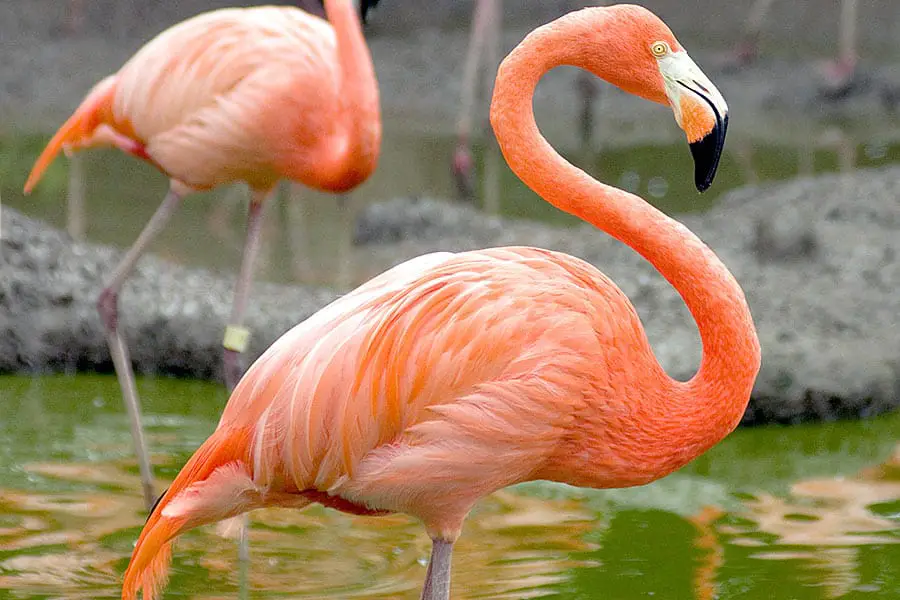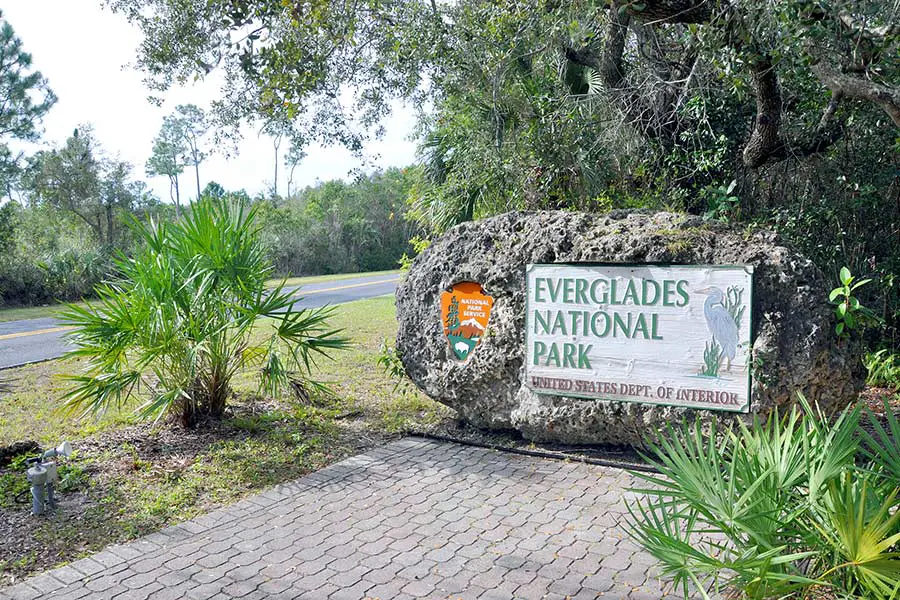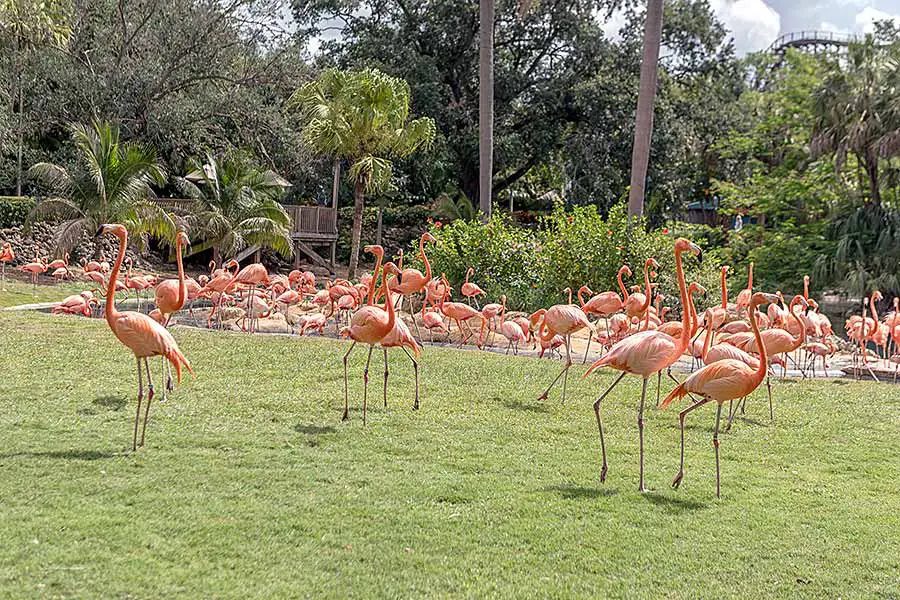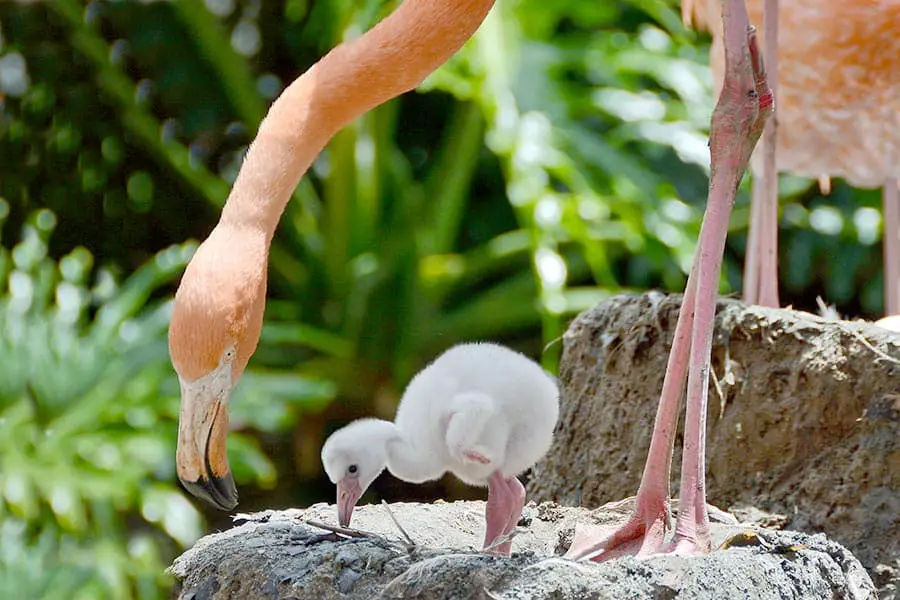
Florida is America’s tropical paradise: warm, sunny, and full of fascinating birds and wildlife; the Sunshine State is a great place to see all kinds of interesting nature. One of the most popular birds associated with Florida is the flamingo. Where can one go to see these fun, flamboyant birds?
Flamingos prefer to congregate in far southern Florida. The best places to see flamingos are in the Everglades or in shallow waters, alkaline lakes, estuaries, and mangroves in south Florida. They have also been spotted in the Florida Keys and on rare occasions as far north as Lake Okeechobee.
Do flamingos migrate to Florida? Do they have a year-round presence anywhere? How tall are flamingos? What do flamingos like to eat? In this post, you will learn the answers to these questions and more.
Florida’s Fabulous Fowl: Flamingos
Florida and flamingos seem to go together like peanut butter and jelly. America’s tropical state seems like a natural place to see and enjoy these beautiful and colorful birds, and in fact, these birds are a native part of the ecosystem of Florida. Sadly, they were hunted nearly to extinction in the fervor of the 1800s; however, in a hopeful sign, these remarkable avians have made a solid return in recent years.
Flamingos like to live in saline or alkaline lakes or river estuaries with minimal vegetation. Flamingos prefer to live in locations where there are not many fish, as they share prey: both fish and flamingos like to eat marine invertebrates. In some flamingo habitats, the introduction of fish into the ecosystem has caused the birds to migrate elsewhere, seeking food sources with less competition.

In Florida, the best place to see flamingos is in the Everglades National Park, which is a premier destination for bird enthusiasts of all stripes. However, they have occasionally been spotted in the Florida Keys, and even as far north as Lake Okeechobee, where a huge flock landed for a few days in 2014.
These trips into the more accessible parts of Florida tend to happen in the spring months of March and April, but they can be found throughout the year in the Everglades.
If you’d like to see flamingos without venturing all the way into the Everglades, there are several easily accessible and family-friendly places to find these gorgeous birds throughout the state. SeaWorld, Busch Gardens, and Disney’s Animal Kingdom all have well-kept flocks of flamingos on their properties that offer visitors a chance to get great photos of these remarkable birds.
Are Flamingos Native to Florida?
For a long time, people assumed that flamingos were not native to Florida. Ornithologists long believed that flamingos in the Sunshine State were vagrant birds that had migrated from the Bahamas or other Caribbean islands, but recent research suggests that these birds are native Floridians.
In fact, researchers combed through the journals of the great bird watcher John James Audubon, who had reported seeing massive flocks of flamingos during his time in Florida.

Another recent development was the capture of the flamingo known as Conchy, who was captured on the Navy base off Key West. The Navy often uses explosives or firearms to scare away birds (so they don’t get sucked into a jet engine, which would be bad news for everybody), but Conchy refused to leave.
So the Navy called in Zoo Miami, who captured and tagged Conchy. The dominant theory was that Conchy would return to Cuba, the Bahamas, or another tropical destination once he was released.
However, to everybody’s surprise, Conchy stayed in Florida! He took up with a flock of flamingos in Florida Bay, where he has stayed on and off since. The long and short of the story is that Conchy has proven that Florida sustains a year-round, permanent population of flamingos, helping cement the notion that these are actually native birds.
Do Flamingos Migrate?
Flamingos don’t migrate in the same sense that other birds do. They do not embark on massive, seasonal, transcontinental voyages from one location to another.
However, researchers have discovered that flamingos will relocate from one feeding location to another if circumstances change. For example, rising water levels affect their ability to wade and hunt for food, so flamingos faced with high water levels will often move on to seek different pastures.
Flamingos also do not like to share hunting grounds with fish. Many species of fish like to feed on the same kinds of algae and invertebrates that flamingos like. If fish move into an area where flamingos are hunting, they will often leave the area in search of less competitive hunting.
Phenomenal Florida Fun Fact: A group of flamingos is called a “flamboyance of flamingos.” This name is perfect for these bright birds.
Other Posts of Interest
- Where Is The Best Place To Find Shark’s Teeth In Florida?
- Where Do Panthers Live In Florida?
- Are There Deer In Florida?
- Do Both Alligators And Crocodiles Live In Florida?
What is a Flamingo’s Favorite Food?
Flamingos like to eat small invertebrates, crustaceans, mollusks, and insects. They will also sometimes feed on small fish. The unusual shape of the flamingo’s bill helps it hunt. These birds will stick their entire head underwater and use their bill to agitate the muck at the bottom of the water, stirring up delicious algae and invertebrates upon which to munch. This method of feeding technically makes flamingos filter feeders, much like baleen whales.
Are Flamingos Dangerous?
Standing somewhere between three and five feet tall, and with big hooked beaks and sharp claws, flamingos certainly look like they could be dangerous. However, these birds are not especially dangerous to human beings. They are not predatory birds by nature and are not known to be aggressive. However, if you get a little too close to them, they will likely peck at you with their strong beaks.
If a flamingo is pecking at you or otherwise being aggressive, you are too close to it and causing it distress. The best way to enjoy wild animals like flamingos is to appreciate them from a distance. If the bird is annoyed, just back away and put some distance between you.
Is There Any Difference Between Male and Female Flamingos?
Male and female flamingos are very similar. They both have similar plumage, bills, and claws. Male flamingos often grow to be slightly larger than female flamingos, but otherwise, they are rather hard to tell apart. Even experienced bird watchers and ornithologists have trouble telling a male from a female flamingo.
Do Flamingos Mate for Life?
Many birds live bohemian lifestyles: some research has found that even relatively docile birds like chickadees have a habit of diversifying their egg clutches with more than one mate. Other birds have communal approaches to raising young, or even lay their eggs in someone else’s nest, a phenomenon known as brood parasitism.
Not so with flamingos. Despite their vibrant colors and distinctive appearances, it is thought that flamingos maintain monogamous relationships. Much like swans, once they mate, it is believed that they are mated for life.
When it is breeding season, a flamboyance of flamingos tends to breed at the same time. The nesting pair will make a mound of mud and debris and lay their egg on top of the mound. The mud and muck in the mound help incubate the egg and keep it nice and warm.
What Color are Baby Flamingos When They’re Born?

Baby flamingos are actually white or gray! The pink color that defines adult flamingos comes from their diet. Many of the algae and invertebrates that flamingos prefer to eat are rich in pigments called carotenoids, which turn feathers pink when metabolized by the bird.
Flamingos are good parents, taking turns raising the chick and working together to achieve nest success. Both the male and female flamingos are able to feed their baby chick with a substance known as crop milk. The milk is a nutrient-rich substance that parent birds secrete to feed their chicks. The red color of crop milk has confused some people into thinking that flamingos feed their young blood, but this is not the case: crop milk is not blood.
Can Flamingos be Other Colors?
The specific shade of the flamingo varies depending on their particular diet. Flamingos in some places may have a slightly different hue: they could be more on the red, orange, or yellow side of pink. However, flamingos are always some shade of pink or white.
Even if we were to feed flamingos a different color food – say, a small crustacean that’s blue or green – this would not be enough to change the color of their feathers. The pink coloration is a result of complex biochemistry, and simply feeding the birds dye or different pigments won’t affect their coloration.
Flamingos: Not Just for the Lawn
Flamingos are beautiful, graceful birds. Seeing a flamboyance of these remarkable creatures wading and fishing is truly the sight of a lifetime: they are bright, beautiful, and amazing to watch.
If you want to see these gorgeous birds in Florida, you can find them in the wild in south Florida or take the family to one of our fabulous parks to see them in captivity. However you decide to see them, Florida’s flamingos are well worth the trip!





